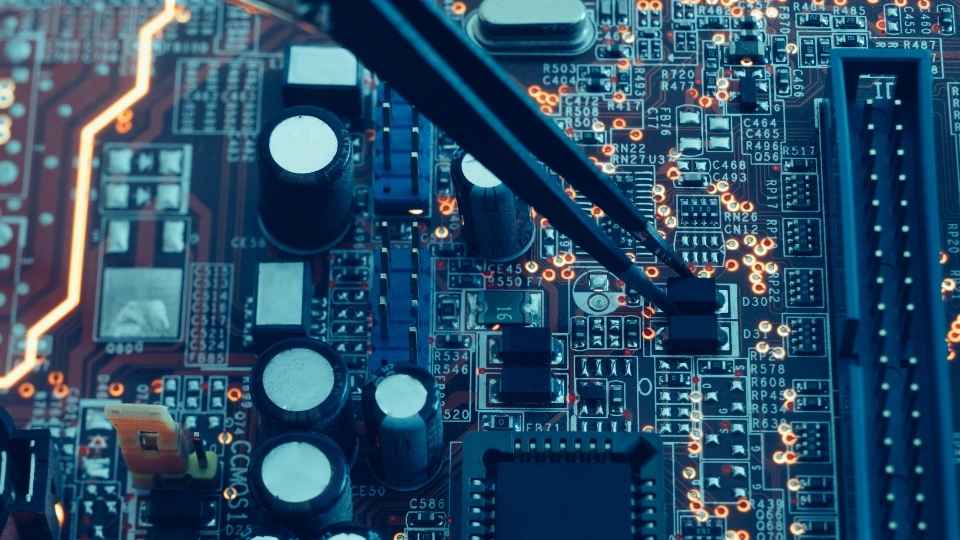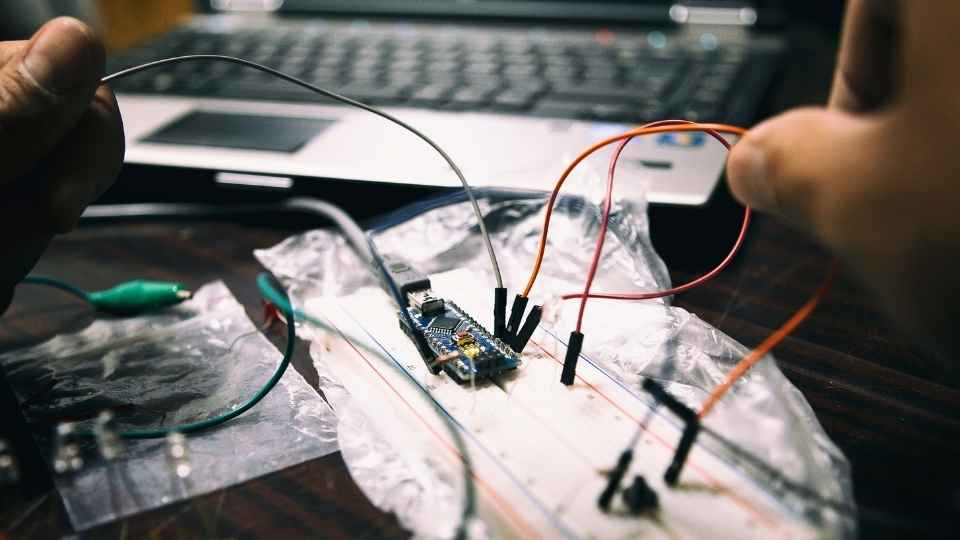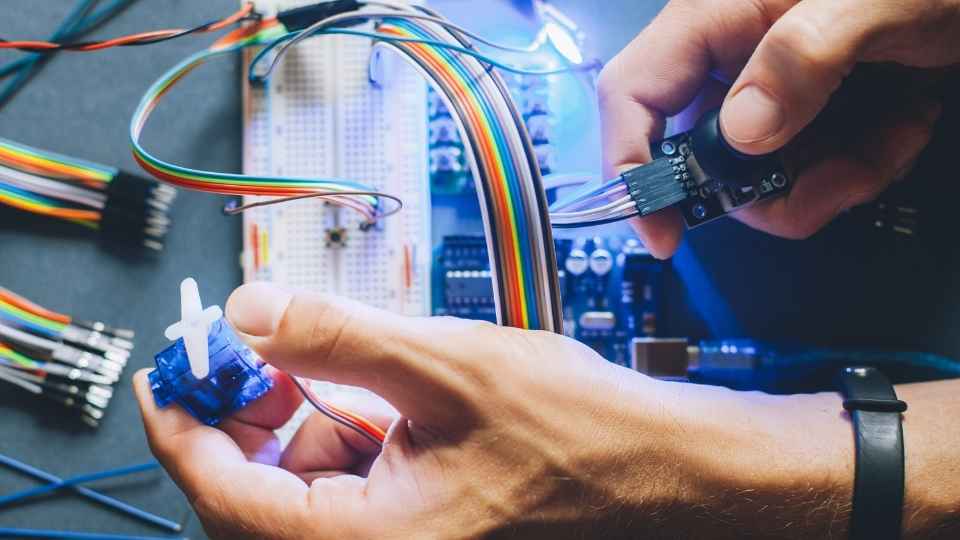
Did you know that over 80% of adults desire to have the freedom and knowledge to build their own electronic circuits? If you're one of those individuals, then you're in luck.
In this article, we will explore step-by-step DIY circuit tutorials that will unravel the world of basic components. From understanding voltage and current to delving into audio circuits and amplifiers, this comprehensive guide will equip you with the technical skills needed to bring your electronic creations to life.
Get ready to unleash your inner engineer and embark on an exciting journey into the world of circuitry.
Key Takeaways
- Understanding voltage, current, and resistance is fundamental to comprehend circuitry.
- Knowledge of passive components such as resistors, capacitors, and inductors is crucial for circuit design and analysis.
- Familiarity with batteries and power supplies helps optimize the performance and longevity of electronic devices.
- Grasping audio circuits and amplifiers enables personalized listening experiences, while understanding LED circuits and displays is essential for building or modifying lighting systems.
The Fundamentals: Understanding Voltage, Current, and Resistance
To begin understanding the fundamentals of circuitry, it is crucial to grasp the concepts of voltage, current, and resistance.
Voltage refers to the potential difference between two points in a circuit and is measured in volts (V). It represents the force that pushes electric charges through a conductor.
Current, on the other hand, measures the flow of electric charges through a conductor and is measured in amperes (A). It represents how many charges pass through a point in a circuit per second.
Resistance is the opposition to current flow offered by a material or component and is measured in ohms (Ω). It limits the amount of current that can flow through a circuit.

Understanding these three fundamental concepts lays the foundation for comprehending more complex aspects of circuitry and empowers individuals with greater freedom to explore and manipulate electrical systems.
Exploring Passive Components: Resistors, Capacitors, and Inductors
Passive components such as resistors, capacitors, and inductors are essential elements to explore when delving into the world of circuitry. Resistors are used to limit the flow of electric current, while capacitors store and release electrical energy. Inductors, on the other hand, store energy in a magnetic field. Understanding these passive components is crucial for designing and analyzing circuits.
Resistors play a vital role in controlling current flow by offering resistance to the flow of electrons. They are represented by color codes that indicate their resistance value.
Capacitors store electrical charge and can be found in various forms such as ceramic or electrolytic capacitors.
Inductors store energy in a magnetic field created by an electric current passing through them. They are often used in applications where it is necessary to control changes in current or voltage over time.
Power Up: Unveiling the Secrets of Batteries and Power Supplies
Batteries and power supplies are essential components in electronic devices, providing the necessary electrical energy to power them. Understanding how batteries and power supplies work is crucial for anyone interested in electronics. Here are a few key points to consider:
Types of Batteries: There are various types of batteries available, including alkaline, lithium-ion, nickel-cadmium, and lead-acid batteries. Each type has different characteristics and is suitable for specific applications.

Power Supply Units (PSUs): PSUs convert the alternating current (AC) from a wall outlet into direct current (DC) that can be used by electronic devices. They come in different forms such as linear power supplies and switching power supplies.
Voltage Regulation: Batteries and power supplies require voltage regulation to ensure a stable output voltage. This prevents damage to the connected device due to overvoltage or undervoltage conditions.
Understanding the intricacies of batteries and power supplies empowers individuals to choose the most appropriate solution for their specific needs while ensuring optimal performance and longevity of their electronic devices.
Wired for Sound: Delving Into Audio Circuits and Amplifiers
Audio circuits and amplifiers play a crucial role in delivering high-quality sound reproduction, enhancing the overall listening experience for users.
Audio circuits are designed to process and amplify audio signals, ensuring that they are clear, balanced, and free from distortion. These circuits consist of various components such as resistors, capacitors, and transistors that work together to manipulate the electrical signals.
Amplifiers, on the other hand, increase the amplitude of these signals to drive speakers or headphones. They come in different types such as class A, class AB, and class D amplifiers, each with its own advantages and trade-offs.
Understanding audio circuits and amplifiers enables individuals to design their own custom audio systems or modify existing ones according to their preferences. This knowledge empowers users to create personalized listening experiences tailored to their freedom of expression.

Let There Be Light: Shedding Light on LED Circuits and Displays
LED circuits and displays are integral components in modern lighting systems, providing energy-efficient illumination for a wide range of applications. With their compact size, low power consumption, and long lifespan, LEDs have revolutionized the lighting industry. Understanding LED circuits and displays is essential for anyone interested in building or modifying lighting systems.
Here are three key points to consider:
LED Basics: LEDs are diodes that emit light when an electric current passes through them. They have two leads – an anode (positive) and a cathode (negative). It's important to connect them correctly to ensure proper functionality.
Current Limiting Resistors: LEDs require current limiting resistors to prevent excessive current flow, which can damage the diode. Selecting the appropriate resistor value based on the LED's forward voltage and desired operating current is crucial.
Display Types: LED displays come in various forms such as single-digit numeric displays, alphanumeric displays, dot matrix displays, and more. Each type has its own wiring requirements and control methods.
Frequently Asked Questions
How Do I Calculate the Power Dissipated by a Resistor in a Circuit?
To calculate the power dissipated by a resistor in a circuit, you can use the formula P = I^2 * R, where P is power, I is current flowing through the resistor, and R is the resistance value.
What Is the Difference Between a Capacitor and an Inductor?
A capacitor and an inductor are two different types of passive electronic components commonly used in circuits. While a capacitor stores electrical energy in an electric field, an inductor stores energy in a magnetic field.

How Do I Choose the Right Battery or Power Supply for My Circuit?
Choosing the right battery or power supply for a circuit requires considering various factors such as voltage requirements, current capacity, and form factor compatibility. Careful analysis and calculation are necessary to ensure optimal performance and safety.
What Is the Purpose of an Amplifier in an Audio Circuit?
The purpose of an amplifier in an audio circuit is to increase the amplitude of the electrical signal, thereby boosting the strength and clarity of sound. This allows for better audio quality and ensures that the sound can be heard clearly.
How Can I Control the Brightness of an LED in a Circuit?
To control the brightness of an LED in a circuit, you can use techniques like pulse width modulation (PWM) or voltage regulation. These methods allow you to adjust the amount of current flowing through the LED, thus controlling its brightness.
 Basic Electronics ConceptsEssential ToolsCircuit Design BasicsMicrocontrollersDIY Electronics ProjectsRoboticsPrivacy PolicyTerms And Conditions
Basic Electronics ConceptsEssential ToolsCircuit Design BasicsMicrocontrollersDIY Electronics ProjectsRoboticsPrivacy PolicyTerms And Conditions
